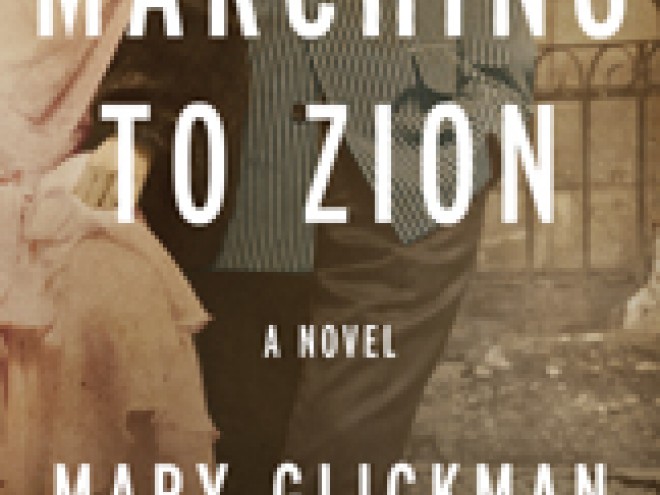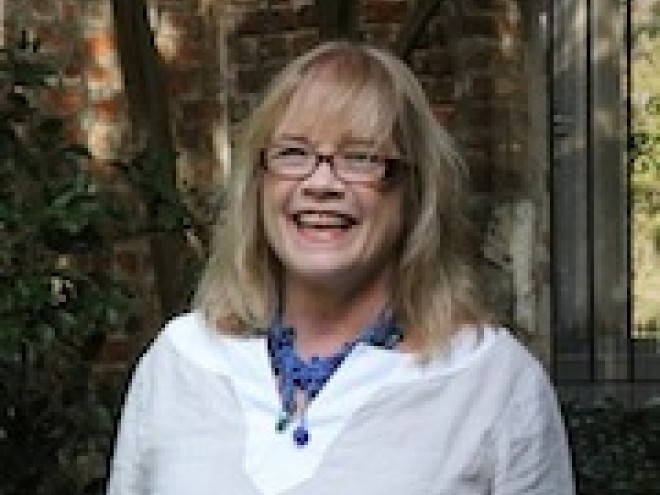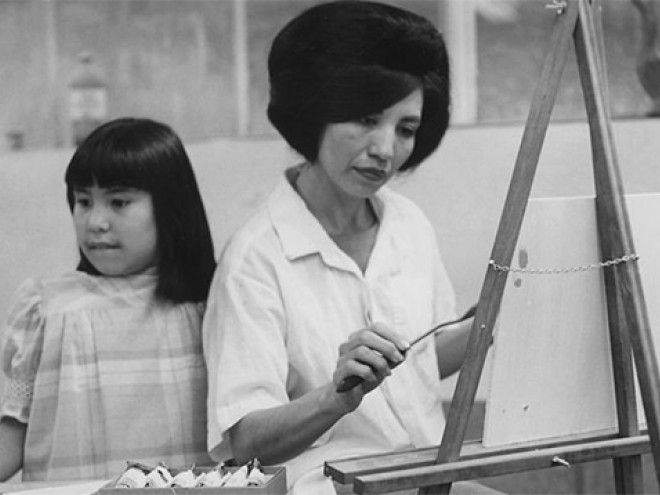This week, Mary Glickman, the author of Home in the Morning , National Jewish Book Award Fiction Finalist
One More River, and the forthcoming Marching to Zion blogs for The Postscript on the the writing process and how readers’ feedback plays in. The Postscript series is a special peek “behind the scenes” of a book. It’s a juicy little extra something to add to a book club’s discussion and a reader’s understanding of how the book came together.
To “host” Mary at your next book club meeting, request her through JBC Live Chat.
One of the curiosities about writing is that the author often doesn’t know what they’ve got until a work’s finished. You start out writing one thing, with a general idea in mind, perhaps character sketches, or for the OCD among us, outlines. As you continue, the work assumes an internal logic, and consequently, you make adjustments. For me, the guiding principle here is voice. I go where the voice leads. Whatever rings false is anti-voice; whatever is true embraces voice.
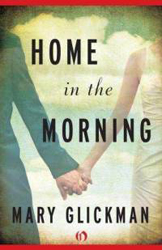 When I started Home in the Morning, I didn’t know much. I knew I wanted to address the North/South divide in understanding about race and class and the Civil Rights Era particularly. I wanted to make a distinction between what I perceive as the social warmth between African Americans and white Southerners in the New South and the less cordial institutionalized equality of opportunity in the North. I thought to use Southern vs Northern Jews as my mode d’emploi. Why not? The history fit. The activism of Northern Jews in the Civil Rights Era is legend. The danger this thrust upon Southern Jews indisputable. The voice I chose is a Southern one I call an “oral narrator”; one who eschews quotation marks, varies point of view, and hops about in time. And I have to say, for me anyway, that voice sang.
When I started Home in the Morning, I didn’t know much. I knew I wanted to address the North/South divide in understanding about race and class and the Civil Rights Era particularly. I wanted to make a distinction between what I perceive as the social warmth between African Americans and white Southerners in the New South and the less cordial institutionalized equality of opportunity in the North. I thought to use Southern vs Northern Jews as my mode d’emploi. Why not? The history fit. The activism of Northern Jews in the Civil Rights Era is legend. The danger this thrust upon Southern Jews indisputable. The voice I chose is a Southern one I call an “oral narrator”; one who eschews quotation marks, varies point of view, and hops about in time. And I have to say, for me anyway, that voice sang.
One More River, and the forthcoming Marching to Zion blogs for The Postscript on the the writing process and how readers’ feedback plays in. The Postscript series is a special peek “behind the scenes” of a book. It’s a juicy little extra something to add to a book club’s discussion and a reader’s understanding of how the book came together.
To “host” Mary at your next book club meeting, request her through JBC Live Chat.
 When I started Home in the Morning, I didn’t know much. I knew I wanted to address the North/South divide in understanding about race and class and the Civil Rights Era particularly. I wanted to make a distinction between what I perceive as the social warmth between African Americans and white Southerners in the New South and the less cordial institutionalized equality of opportunity in the North. I thought to use Southern vs Northern Jews as my mode d’emploi. Why not? The history fit. The activism of Northern Jews in the Civil Rights Era is legend. The danger this thrust upon Southern Jews indisputable. The voice I chose is a Southern one I call an “oral narrator”; one who eschews quotation marks, varies point of view, and hops about in time. And I have to say, for me anyway, that voice sang.
When I started Home in the Morning, I didn’t know much. I knew I wanted to address the North/South divide in understanding about race and class and the Civil Rights Era particularly. I wanted to make a distinction between what I perceive as the social warmth between African Americans and white Southerners in the New South and the less cordial institutionalized equality of opportunity in the North. I thought to use Southern vs Northern Jews as my mode d’emploi. Why not? The history fit. The activism of Northern Jews in the Civil Rights Era is legend. The danger this thrust upon Southern Jews indisputable. The voice I chose is a Southern one I call an “oral narrator”; one who eschews quotation marks, varies point of view, and hops about in time. And I have to say, for me anyway, that voice sang. Characters came to me I had not anticipated, among them Mickey Moe Levy, who was so attractive to both myself and 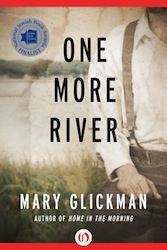 sympathetic readers, that I fleshed out his history in One More River. New themes evolved and characters, too, including Aurora Mae Stanton, a complex person I explored further in my new novel, Marching to Zion. But still, after completing each work, I looked at the finished text and thought: Now, Mary old girl, what exactly have you got here. In part, it’s my readers that gave me the answer.
sympathetic readers, that I fleshed out his history in One More River. New themes evolved and characters, too, including Aurora Mae Stanton, a complex person I explored further in my new novel, Marching to Zion. But still, after completing each work, I looked at the finished text and thought: Now, Mary old girl, what exactly have you got here. In part, it’s my readers that gave me the answer.
 sympathetic readers, that I fleshed out his history in One More River. New themes evolved and characters, too, including Aurora Mae Stanton, a complex person I explored further in my new novel, Marching to Zion. But still, after completing each work, I looked at the finished text and thought: Now, Mary old girl, what exactly have you got here. In part, it’s my readers that gave me the answer.
sympathetic readers, that I fleshed out his history in One More River. New themes evolved and characters, too, including Aurora Mae Stanton, a complex person I explored further in my new novel, Marching to Zion. But still, after completing each work, I looked at the finished text and thought: Now, Mary old girl, what exactly have you got here. In part, it’s my readers that gave me the answer. After I wrote the first two novels, a reader mentioned to me that I’d written a narrative of African American and Jewish relations over the course of the 20th century. It was a Eureka! moment for me. It was not my conscious intent to do so, but I could see the reader’s point. One of the tragedies of the last decades of the 20th century is the estrangement of the African American and Jewish communities in America after a long history of empathy and as brothers-in-arms during the Civil Rights Era. So  I decided to deepen my themes in Marching to Zion with the hope that a reawakening of old understandings and communalities might be inspired.
I decided to deepen my themes in Marching to Zion with the hope that a reawakening of old understandings and communalities might be inspired.
 I decided to deepen my themes in Marching to Zion with the hope that a reawakening of old understandings and communalities might be inspired.
I decided to deepen my themes in Marching to Zion with the hope that a reawakening of old understandings and communalities might be inspired. When I speak to book groups, I like to point out that the feedback I receive from readers is invaluable as it helps me understand what I have accomplished and informs my next work. I had a 30 year history of writing novels before publication, so I can say with authority: While many of us write in the dark, the glory of publication is that we no longer write in a vacuum. Writing and reading. Reading and response. As they say, it’s a process!
Born on the South Shore of Boston, Mary Glickman is the prolific author of Southern Jewish historical novels, including National Jewish Book Awards Finalist in Fiction’s One More River and An Undisturbed Peace, listed by Southern Living as a best novel of 2016. Ain’t No Grave is her sixth novel. She lives on Wadmalaw Island, SC, with her husband.
